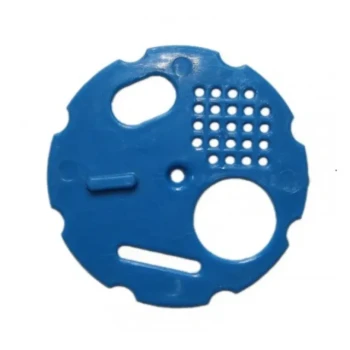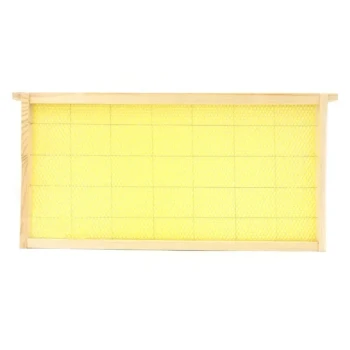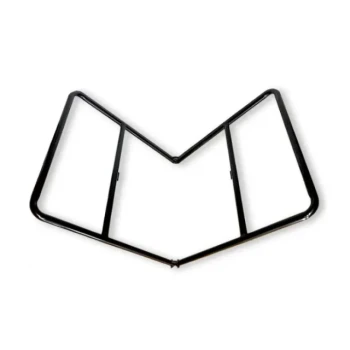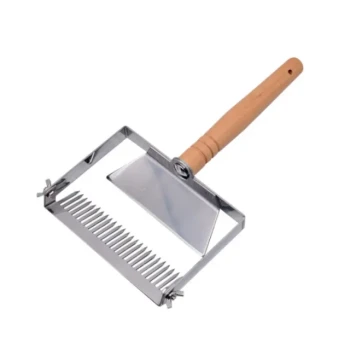At its core, a top-bar hive entrance is a simple design element. It is typically a series of small, circular holes about one inch in diameter or a narrow slot of similar proportions. This design mimics the small, defensible openings that honeybees naturally seek in tree cavities or other wild nests.
The most critical design decision for a top-bar hive entrance is not its size, but its placement. Where you locate the entrance directly dictates how the bee colony organizes its brood nest and honey stores, fundamentally shaping your entire beekeeping experience.
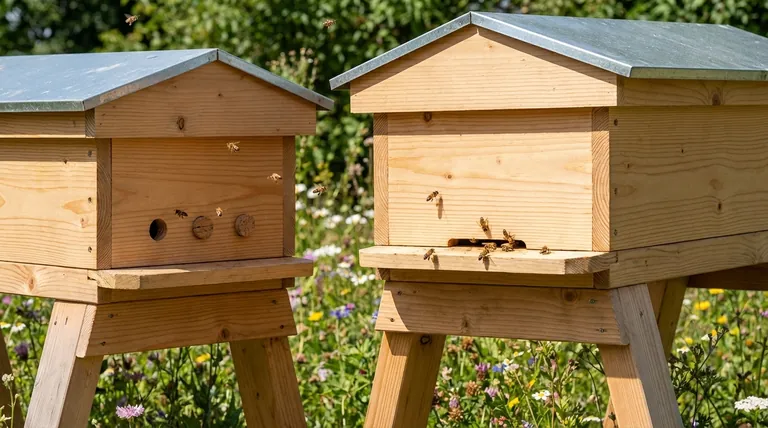
The Philosophy Behind Top-Bar Hive Entrances
The design of a top-bar hive entrance is guided by the goal of replicating a bee's natural environment. This makes the hive feel more secure and intuitive for the colony.
Mimicking Natural Cavities
In the wild, bees choose homes with small, easily defended entrances. A one-inch hole is large enough for traffic but small enough for guard bees to effectively protect against pests like mice, wasps, and robbing bees from other hives.
Standard Size and Shape
Most designs use three to five circular holes, each approximately one inch in diameter. This allows the beekeeper to close off some entrances with corks or plugs to control ventilation and traffic flow depending on the season and colony size.
How Entrance Placement Shapes the Colony
The location of the entrance serves as the colony's "front door." All activity is organized around this point, creating predictable patterns of comb usage inside the hive.
Entrances at the Narrow End
Placing the entrance holes at one of the hive's narrow ends is a very common approach. Bees will establish their brood nest (where the queen lays eggs and young are raised) right near the entrance.
As the colony grows and gathers nectar, they will progressively store honey in combs built further and further away from the entrance, deep inside the hive.
Entrances in the Middle
Alternatively, placing the entrance in the center of one of the long sides creates a different internal structure. The bees will establish the brood nest in the middle of the hive, directly behind the entrance.
From there, honey stores will expand outwards in both directions, towards the two narrow ends of the hive.
Understanding the Trade-offs
Neither entrance placement is inherently superior; they simply offer different advantages and require different management styles. Choosing one over the other is a matter of strategic preference.
The End Entrance: Pros and Cons
An end entrance creates a highly organized hive. All the honey is consolidated at the "back," making harvesting straightforward—you almost always know where to find the honey-filled combs.
The primary trade-off is that as the hive expands, foraging bees returning with nectar may have to travel the entire length of the hive to deposit their stores.
The Middle Entrance: Pros and Cons
A central entrance is arguably more efficient for the bees, as the travel distance from the entrance to any given comb is reduced.
However, this design splits your honey stores into two separate sections. This can make hive inspections and harvesting slightly more complex, as you need to manage and check both sides of the brood nest.
Making the Right Choice for Your Goal
Selecting an entrance location is one of the first and most impactful decisions in setting up a top-bar hive. Your choice should align with your beekeeping priorities.
- If your primary focus is straightforward honey harvesting: An end entrance is often the best choice, as it consolidates honey stores in one predictable location.
- If your primary focus is colony efficiency: A central entrance may provide a slight advantage by minimizing the travel distance for bees inside the hive.
- If your primary focus is flexibility: Consider drilling entrances in both locations and using plugs to open only the ones you wish to use, allowing you to adapt over time.
Understanding the direct link between entrance placement and colony organization empowers you to manage your hive with purpose.
Summary Table:
| Entrance Placement | Colony Organization | Key Advantage |
|---|---|---|
| Narrow End | Brood nest near entrance; honey stored at the far end. | Straightforward honey harvesting. |
| Middle of Long Side | Brood nest in center; honey stored on both ends. | Reduced bee travel distance inside the hive. |
Ready to build or upgrade your top-bar hive with the right entrance design?
At HONESTBEE, we supply durable, precision-made beekeeping supplies and equipment to commercial apiaries and distributors. Whether you're managing a few hives or a large-scale operation, the right equipment is the foundation of a healthy, productive colony.
Contact our experts today to discuss your hive design needs and discover how our wholesale-focused operations can support your success.
Visual Guide
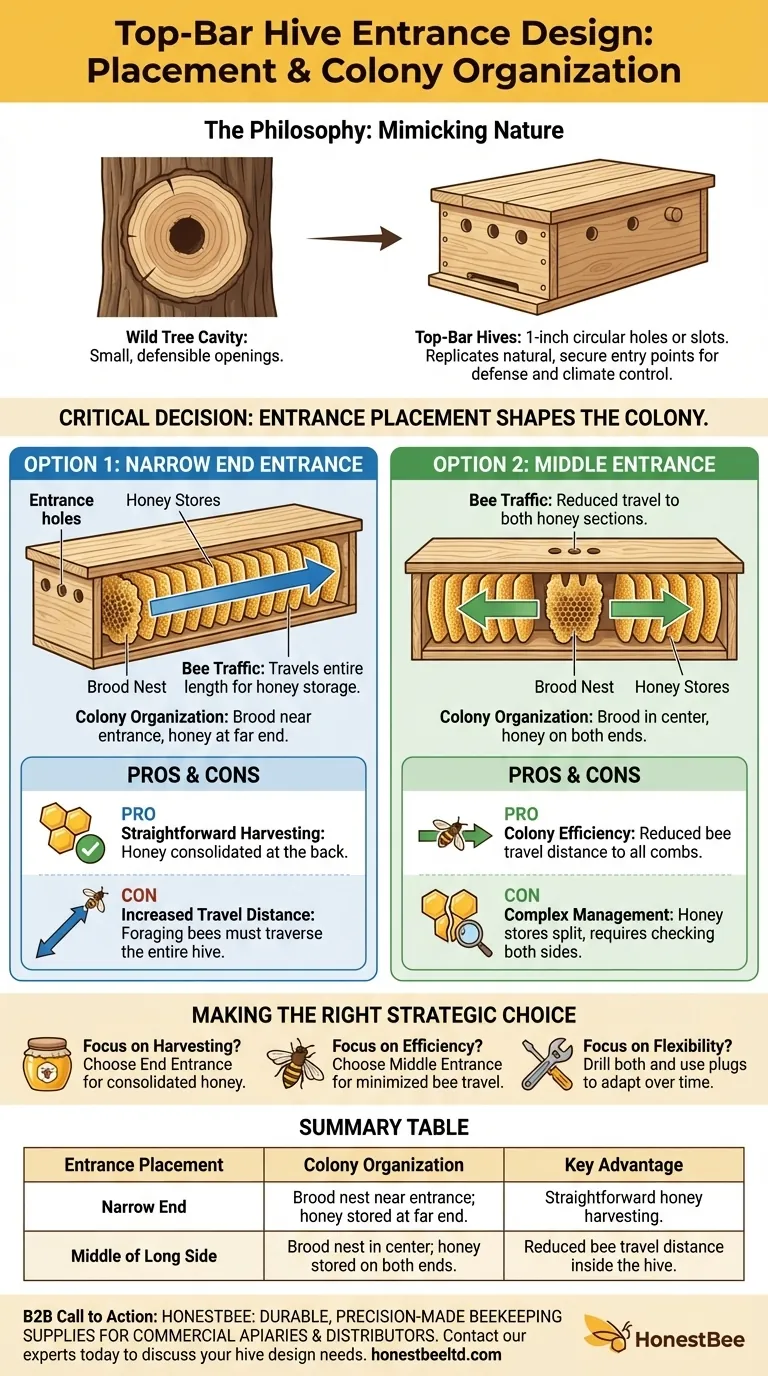
Related Products
- Long Langstroth Style Horizontal Top Bar Hive for Wholesale
- Professional Galvanized Hive Strap with Secure Locking Buckle for Beekeeping
- Multi-Functional Rotary Hive Entrance Disc for Beekeeping
- Wholesales Dadant Size Wooden Bee Hives for Beekeeping
- Beehive Entrance Discs Plastic Bee Entrance Disc for Bee Hives
People Also Ask
- How does the top bar hive help control varroa mites? A Natural Approach to Mite Management
- How are entrances designed in top bar hives? Master Beehive Layout for Maximum Honey
- What are the advantages of a top bar hive? Simpler, Bee-Centric Beekeeping for All
- What are the benefits of a top bar hive? A Natural, Low-Impact Approach to Beekeeping
- What is a top bar bee hive? A Natural, Low-Stress Beekeeping Solution


